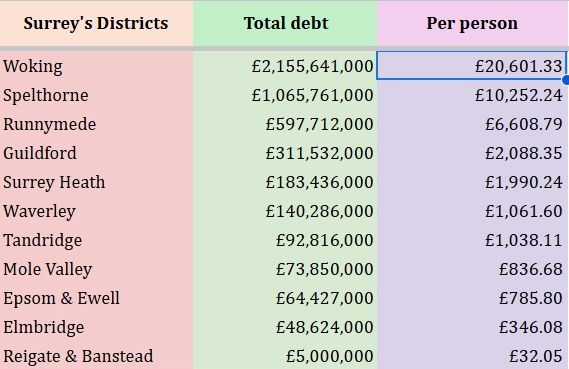The government’s whopping £500m bailout for debt-ridden Woking Borough Council may not be the last. The cash injection, announced as part of Surrey’s local government reorganisation on October 28, will cover roughly a quarter of Woking’s debt. But ministers have described it as only the “first tranche” of support. Surrey County Council leader Tim Oliver said commissioners appointed to oversee Woking’s finances are still selling off property assets to reduce the total debt and the government has left the door open to further payments.
“They’ve called it a first tranche. So this is £500 million now to get on with selling down the assets, reducing the debt as much as you can, and then we’ll have a conversation about that balance,” he told the Local Democracy Reporting Service. “The expectation is that whatever the rump of the debt remains, the government will pick it up.”
Woking’s debts, which peaked around £2bn, stem from a series of risky property investments that left the council effectively bankrupt. The government’s intervention prevents the shortfall from being passed on to other Surrey residents, something Cllr Oliver said ministers have been “very clear” would not happen. “It’s nobody’s fault, least of all residents’, but they were at risk of being penalised just for living in the wrong place,” the council leader said. “We worked hard to make sure that didn’t happen.”
He added that securing government support for Woking’s debt was a collective effort between Surrey’s council leaders and MPs. Cllr Oliver added that ministers were keen to stress Woking’s situation was “exceptional” to prevent other indebted councils seeking similar bailouts. Although Woking council may be able to breathe a slight sigh of relief with the government’s handout, residents are still left wondering what will happen with the rest of the debt across Surrey.
Cllr Oliver said the coming months would be focused on “getting the detail right” and ensuring that the reorganisation delivers simpler, stronger local government. “It’s great to get a decision, but now the hard work starts,” he said. “We’ll make sure this works for residents and that the government honours its commitment to clearing Woking’s debt.”
The announcement came alongside confirmation that Surrey will be split into two new unitary councils, replacing the current county and district system by 2027. While more than half of those who responded to the public consultation backed a three-way split, ministers said the two-unitary model was “more likely to be financially sustainable”. Local government minister Alison McGovern said the decision “does not set any precedent” for other areas, but acknowledged Surrey’s “unique financial context”: a hint that more support could still be needed. The Ministry of Housing, Communities & Local Government have been asked for comment.
Related reports:
Strip Woking’s debt-man of his OBE MP says
Government bailout to ease Woking’s debt burden
Who will be saddled with Spelthorne’s and Woking’s £3 billion debts?
Image: Woking Victoria Square Towers (View From North)



